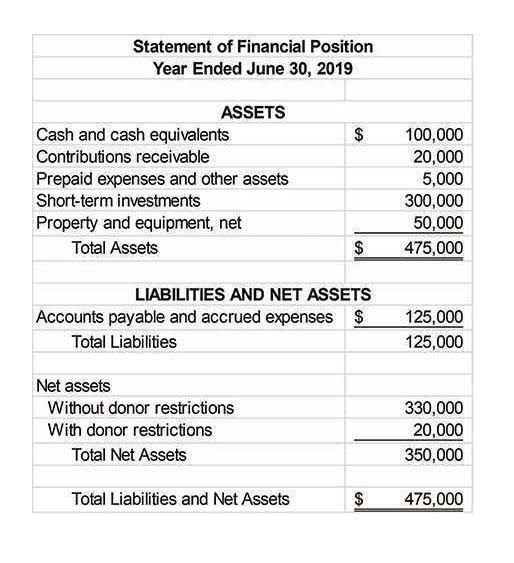
On your income statement, deduct the whole cost of goods sold from the total income. The gross margin, or the amount gained from the sale of your goods and services, will be determined by this calculation. After that, you’ll need to figure out how much profit your company made throughout the reporting period. If you’ve not yet got all of the payments, your revenue comprises all of the money generated for your services throughout the reporting period. Sum up all of the items in the revenue line from your trial balance and enter the total amount. This transaction is recognized at the acquisition price on Firm A’s balance sheet and is carried forward until the stock is sold.
Real-Life Examples for Comprehensive Income
Whether you are a sole proprietor or have a team of employees, regularly reviewing your financial statements will help you discover operational disparities. Reduce the income tax from the pre-tax income to arrive at your company’s net income. This will offer you a broad picture of your company’s success and allow you to assess how lucrative it has been.

Where Does Other Comprehensive Income Appear on Financial Statements?
The statement of comprehensive income is a financial statement that highlights your business’s net income and other comprehensive income (OCI). The net income is obtained from your business income statement for your accounting period. For stress-free accounting and expert guidance on financial reporting, consider partnering with a certified CPA firm.
Everything to Run Your Business

Only by recognising the effective gain or loss in OCI and allowing it to be reclassified from equity to SOPL can users to see the results of the hedging relationship. This lack of a consistent basis for determining how items should be presented has led to an inconsistent use of OCI in IFRS standards. It may be difficult to deal with OCI on a conceptual level since the International Accounting Standards Board (the Board) is finding it difficult to find a sound conceptual basis. At present it is down to individual accounting standards to direct when gains and losses are to be reported in OCI However, there is urgent need for some guidance around this issue.
- The higher the earnings for each share, the more profitable it is to invest in that business.
- The net gets moved into a company’s statement of comprehensive income where adjustments are made for non-owner activities.
- Well it is correct, but it doesn’t reflect what the stock is actually worth.
- Look for other statements to get an inner view of the firm, go through their last ten years of statements, and try to see a trend coming forward.
- It only refers to changes in the net assets of a company due to non-owner events and sources.

The income and expenditure items that have not yet been recognized are included in the statement of comprehensive income. It is supposed to complement an organization’s income statement by providing a more complete view of a company’s financial performance. statement of comprehensive income A company’s income statement details revenues and expenses, including taxes and interest.
Common Examples of Other Comprehensive Income

Thus, profit or loss needs to contain all information relevant to investors. Misuse of OCI would undermine retained earnings the credibility of the profit for the year figure and key investor ratios used by stakeholders to assess an entities performance. The use of OCI as a temporary holding for cash flow hedging instruments and foreign currency translation is non-controversial and widely understood. These will be reclassified in a future accounting period therefore impacting profit or loss. When preparing financial statements, it is important to realize that other comprehensive income cannot be reported on the income statement as dictated by accounting standards.
- Yarilet Perez is an experienced multimedia journalist and fact-checker with a Master of Science in Journalism.
- Here’s a simple list of items included in the “Statement of Comprehensive Income.”
- The income statement encompasses both the current revenues resulting from sales and the accounts receivables, which the firm is yet to be paid.
- By including both realized and unrealized gains and losses, comprehensive income offers valuable insights into a company’s overall financial health and helps stakeholders make more informed decisions.
- This will offer you a broad picture of your company’s success and allow you to assess how lucrative it has been.
Instead the adjustments are reported as other comprehensive income on the statement of comprehensive income and will be included in accumulated other comprehensive income (which is a separate item within stockholders’ equity). Since the income statement only recognizes income and expenses when they are earned or incurred, many other sources of revenue and expenses are left off the statement because they haven’t been realized yet. Investors and creditors still want to know how these other items affect the equity accounts even if they are not included in the bottom line. The first step in creating an income statement is deciding on the reporting period for your report. Annual, quarterly, or monthly income statements are the most common choices for businesses.
A third proposition is for the OCI to adopt a broad approach, by also including transitory gains and losses. The Board would decide in each IFRS standard whether a transitory remeasurement should be subsequently recycled. A standard CI statement is usually attached to the bottom of the income statement and includes a separate heading. A statement of comprehensive income does have several notable limitations. To compute income tax, multiply your pre-tax income by the appropriate state tax rate.
Other comprehensive income (OCI) appears on the balance sheet as does accumulated other comprehensive income (AOCI). Any held investment classified as available for sale, which is https://www.facebook.com/BooksTimeInc not intended to be held until maturity, and isn’t a loan or a receivable, may be recognized as other comprehensive income. The second format of Statement of Comprehensive Income is the multiple-step of the income statement. Examples of transitory gains and losses are those that arise on the remeasurement of defined benefit pension funds and revaluation surpluses on PPE.

Deixar Um Comentário